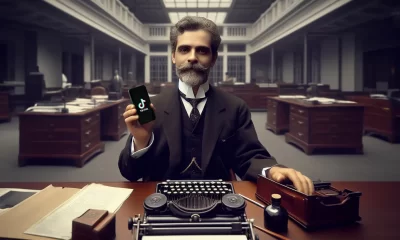Breaking Free from the Shackles of Bad Habits: 5 books to help you

Ever feel like bad habits are holding you back? We’ve all been there—whether it’s procrastination, negative thinking, or just not living up to who we want to be.
These habits can feel like invisible chains, slowly pulling us away from our full potential, so breaking free from bad habits.
It’s frustrating, isn’t it? Day after day, you watch time slip through your fingers, feeling like you’re stuck in a loop of missed chances and broken promises to yourself.
But here’s the deal—this isn’t your final destination. You can break free.
Change is within your reach, and it doesn’t require a huge leap. It’s about taking small, steady steps toward transformation. And just like that, you’re on your way to breaking those chains, one by one, rediscovering the power inside you to shape your life.
Overcoming bad habits?
Learn strategies to cultivate a growth mindset.
Table of Contents
“You are not stuck where you are unless you decide to be.” — Dr. Wayne Dyer
Unlock Your Potential: Life-Changing Books on Amazon’s Self-Development Sale
As you begin this journey of self-renewal, there’s a treasure chest of knowledge just waiting to be opened. Right now, Amazon’s offering some killer deals on self-development books that can truly guide you on your path to growth.
Books are more than just stories—they’re tools. They open your mind, bring new ideas, and arm you with strategies for real, lasting change. And guess what? These books are just a click away, with deals too good to ignore.
So, are you ready to turn the page on your old self and start a new chapter in your life?
Transforming Life with “Atomic Habits”
Ever wonder why bad habits stick, but good ones seem so hard to form? Well, James Clear’s Atomic Habits breaks it down for you. It’s not just about willpower; it’s about understanding the small, everyday actions that can make or break your habits.
Think about it like building a house. Each small brick, every daily action, is a step toward creating something sturdy. Clear shows you that even the tiniest changes—when repeated consistently—can transform your life in a big way.
“Habits are the compound interest of self-improvement.” — James Clear
Imagine a life where good habits aren’t a struggle but a natural part of your routine. That’s what this book helps you achieve. It’s all about making small tweaks that lead to massive results. Whether it’s getting fit, improving productivity, or finding more time for the things you love, Atomic Habits offers a step-by-step guide to make those dreams a reality.
Embracing Change with “Maybe You Should Talk to Someone”
Next up is Maybe You Should Talk to Someone by Lori Gottlieb. This book takes you behind the curtain of therapy, showing that even therapists sometimes need help. It’s a powerful reminder that no matter how put-together someone looks, they could still be fighting an internal battle.
Is your body telling you something?
Decode the emotional language of ailments.
Gottlieb’s storytelling is raw, funny, and deeply relatable. You’ll laugh, cry, and most importantly—reflect. You’ll see that seeking help, being vulnerable, and talking about your struggles aren’t signs of weakness, but powerful tools for growth.
This book invites you to start your own conversation, whether it’s with a therapist, a friend, or even yourself. It’s about tearing down the walls we build and finding the courage to face what’s inside.
Expanding Perspectives with “101 Essays That Will Change the Way You Think”
Want a fresh perspective on life? 101 Essays That Will Change the Way You Think by Brianna Wiest does just that. It’s packed with insights that challenge you to see the world differently, encouraging you to rethink your habits, your emotions, and even your relationships.
Each essay feels like a deep conversation with a wise friend, nudging you toward a more thoughtful and intentional way of living. Wiest’s words help you understand that your mindset shapes your reality, and with a shift in perspective, you can unlock new possibilities.
Navigating Stress with “Burnout: The Secret to Unlocking the Stress Cycle”
Stress is everywhere, but Burnout by Emily Nagoski offers a fresh way to deal with it. This book digs deep into the science of stress, especially how it affects women differently than men. But it’s not just about coping—it’s about breaking the cycle and finding ways to complete the stress cycle so it doesn’t control you.
It’s a must-read for anyone feeling overwhelmed, helping you understand your body and mind in a whole new way.
“You don’t have to wait until the world is ready to act.” — Emily Nagoski
Building Mental Strength with “13 Things Mentally Strong People Don’t Do”
If you want to build mental strength, Amy Morin’s 13 Things Mentally Strong People Don’t Do is your guide. It’s a powerful look at the habits you need to ditch if you want to thrive. Morin gives practical advice on how to stop feeling sorry for yourself, quit resenting others’ success, and face change head-on.
This book is a game-changer for anyone looking to break free from negativity and develop a mindset that invites success.
Breaking Free – The Road Ahead: Where Do We Go from Here?
These books are just the beginning. They offer you new tools, fresh perspectives, and strategies for breaking free from the habits holding you back. The only question left is: Are you ready to take that first step?
Remember, growth is a journey, not a race. By investing in yourself and applying the lessons from these books, you can create real, lasting change.
So, where will you begin? Which book speaks to you? Let’s start this journey together—one step, one page at a time.
9 Strategies to Develop a Growth Mindset

We’ve all faced moments when things didn’t go our way. Maybe you didn’t get the grade you wanted, missed a big opportunity, or faced a tough situation.
It hurts, doesn’t it? But here’s the thing: how you bounce back matters.
With a growth mindset after disappointment, you can flip the script. Instead of seeing failure, you see a chance to learn, grow, and improve.
It’s about taking that disappointment and turning it into fuel for something better.
“Disappointment is inevitable, but defeat is optional.” – Anonymous
Let’s look at 9 simple ways to build a growth mindset after disappointment and come back stronger.
Table of Contents
What is a Growth Mindset?
A growth mindset is like a muscle—you can strengthen it over time. People with this mindset believe they can improve through hard work, learning, and trying new things.
They don’t shy away from challenges; they embrace them.
On the flip side, a fixed mindset is when you believe your abilities are stuck—you’re either good at something, or you’re not. But that kind of thinking can trap you.
“In a growth mindset, challenges are seen as opportunities to grow, not as threats to competence.” – Carol S. Dweck
When you adopt a growth mindset after disappointment, you’re telling yourself, “I can get better.” You’re no longer afraid of failure because, to you, failure is just another way to grow.
9 Ways to Build a Growth Mindset After Disappointment
1. Acknowledge the Disappointment and Move Forward
First, let yourself feel the disappointment. It’s okay to be upset—it’s part of being human. But don’t stay stuck there. Acknowledge it, then make the decision to move forward.
“The first step to bouncing back is accepting that things didn’t go as planned, and that’s okay.” – Brené Brown
2. Reframe the Setback as a Chance to Learn
Instead of seeing the setback as a dead end, ask yourself, “What can I learn from this?” Turning a problem into a possibility is key to having a growth mindset after disappointment.
3. Focus on What the Experience Taught You
Even in disappointment, there’s always something to learn. Every experience, good or bad, has value. Find the lesson hidden inside, like a treasure buried beneath the sand.
4. Set Realistic New Goals
After disappointment, it’s easy to feel lost. But don’t give up. Instead, set new, achievable goals. Like climbing a mountain, sometimes you slip, but you keep going.
5. Embrace the Process Over Immediate Results
Success doesn’t happen overnight. That’s why embracing the journey is so important. Focus on how you’re growing, not how fast you’re getting there.
6. Surround Yourself with Supportive, Growth-Minded People
Surround yourself with friends, mentors, or family who believe in growth and encourage you to keep going.
“The people you surround yourself with can either lift you higher or pull you down. Choose wisely.” – John C. Maxwell
7. Focus on What You Can Control
Some things are out of our hands—like the weather, or someone else’s opinion. But you can control how you react. By focusing on what you can change, you take charge of your journey.
8. Practice Gratitude for What You’ve Learned
Practicing gratitude shifts your focus from what went wrong to what you’ve gained. Gratitude is key to a growth mindset after disappointment.
9. Celebrate Small Victories Along the Way
Every little win counts. Celebrate these small victories, and they’ll fuel your confidence and commitment to keep going.
How a Growth Mindset Helps You Overcome Disappointment
A growth mindset after disappointment helps you see the bigger picture. When you look at setbacks as temporary, you understand they’re part of the journey, not the end of it.
“I’ve failed over and over again. And that is why I succeed.” – Michael Jordan
Recommended Books to Build a Growth Mindset After Disappointment
Here are a few books that can guide you on your journey to developing a growth mindset after disappointment:
1. Mindset: The New Psychology of Success by Carol S. Dweck
This book explains the difference between a growth and fixed mindset and offers tools to shift your thinking.
2. Rising Strong by Brené Brown
Brené Brown dives deep into how we rise after falling. It’s a powerful read for anyone facing setbacks.
3. Grit: The Power of Passion and Perseverance by Angela Duckworth
Duckworth’s research shows how grit—combining passion and persistence—helps people succeed, especially after failure.
Conclusion
Disappointment isn’t the end of the road—it’s just a bend in the journey. Building a growth mindset after disappointment allows you to learn, grow, and come back stronger than ever.
So, start today. Embrace these simple strategies, and watch as your setbacks become stepping stones to a brighter, better future. Your growth begins now.
4 Insights from the Neuroscience of Motivation to Boost Your Personal Development

Ever wonder why some days you feel unstoppable while others you can barely get out of bed? The answer might be in your brain.
Recent studies in the neuroscience of motivation are shedding light on how our brains drive us to pursue goals, take action, and keep going even when the going gets tough.
Understanding these brain functions is changing the way we approach personal development, making it more effective and tailored to how our minds actually work.
By tapping into the science behind motivation, you can learn how to harness your brain’s natural wiring to stay driven, focused, and productive.
Whether you’re trying to build better habits, achieve long-term goals, or simply stay motivated day-to-day, insights from the neuroscience of motivation can be a game-changer.
Let’s dive into some of the most compelling discoveries and how you can apply them to boost your personal development.
Table of Contents
How Motivation Works in the Brain
Motivation starts in the brain, specifically in a part called the reward system. This system involves several brain regions, but the most important player is dopamine—a neurotransmitter often dubbed the “feel-good” chemical.
When you achieve something or even anticipate a reward, your brain releases dopamine, giving you that rush of satisfaction.
But here’s the twist: dopamine isn’t just about pleasure. It’s also about anticipation and drive. When your brain expects a reward, it releases dopamine to push you toward that reward, creating a powerful cycle of motivation.
This is why setting goals and visualizing success can be so effective—they trigger your brain’s reward system, making you more motivated to take action.
Recent studies in the neuroscience of motivation show that understanding how this system works can help us fine-tune our approach to personal development. By aligning our goals and actions with our brain’s natural processes, we can stay motivated and avoid the common pitfalls of burnout and procrastination.
The Role of Dopamine in Motivation
Dopamine plays a central role in the neuroscience of motivation. It’s not just about making you feel good; it’s about driving you to seek out rewards.
Think of dopamine as the fuel that powers your motivation engine. When your brain releases dopamine, it’s like hitting the gas pedal—it propels you forward, making you eager to achieve your goals.
One fascinating aspect of dopamine is that it’s released not just when you achieve something, but also when you anticipate achieving it. This means that the mere thought of accomplishing a goal can boost your motivation.
That’s why visualizing your success or breaking your goals into smaller, achievable steps can be so powerful. It keeps the dopamine flowing, which keeps you motivated.
Dopamine also plays a role in forming habits. When you repeatedly perform an action that leads to a reward, your brain creates a dopamine pathway, making it easier—and more automatic—to repeat that action.
This is why habits are so hard to break but also why they’re so powerful once established.
By understanding dopamine’s role, you can structure your goals and habits in a way that maximizes your motivation and keeps you moving toward success.
5 Reasons Why Marcus Aurelius Meditations Is Key to Personal Growth

Why Marcus Aurelius Meditations is a Timeless Guide for Personal Growth and Resilience
Have you ever felt like life’s challenges are too overwhelming?
You’re not alone.
Many people are turning to Marcus Aurelius Meditations for guidance.
This ancient Roman emperor and Stoic philosopher wrote “Meditations”, a book full of wisdom on how to stay strong, disciplined, and focused, even when life gets tough.
In today’s fast-paced world, the lessons from Marcus Aurelius Meditations are more relevant than ever. Let’s dive into why this ancient text continues to inspire and help people grow.
Table of Contents
The Life and Philosophy of Marcus Aurelius
Marcus Aurelius wasn’t just a Roman emperor; he was also a philosopher who believed in living a virtuous life. Born in 121 AD, Marcus faced many hardships, like wars and political troubles.

But instead of giving up, he turned to Stoic philosophy, which taught him to stay calm and in control, no matter what.
In his book, “Meditations”, Marcus Aurelius shared his personal thoughts and struggles.
He never meant for these writings to be published—they were his way of staying focused and disciplined during tough times.
Today, these private reflections, known as Marcus Aurelius Meditations, are like a treasure chest of wisdom, offering us advice on how to handle life’s ups and downs with grace and strength.
Key Themes in Meditations
Marcus Aurelius Meditations is packed with timeless ideas that can help anyone, no matter their age or background. Let’s look at some of the key themes that make this book so powerful.
1. Resilience in the Face of Adversity
One of the main messages in “Meditations” is that challenges are a natural part of life. Marcus teaches us to be resilient, accepting what we can’t change and focusing on what we can control.
This mindset helps us stay grounded, even when everything around us feels chaotic.
2. Self-Discipline and Control
Another important lesson from Marcus is the value of self-discipline. He believed in mastering our impulses and emotions, not letting them control us.

By staying disciplined, we can make better decisions and keep our cool, even when things get tough.
This isn’t about ignoring our feelings but responding to them thoughtfully.
3. Maintaining Perspective
Marcus also reminds us to keep things in perspective. He knew that our time on earth is short and that many of our worries aren’t as big as they seem.
By keeping this bigger picture in mind, we can avoid getting caught up in small problems and focus on what truly matters.
These themes show why Marcus Aurelius Meditations is such a powerful guide for anyone looking to live a better, more meaningful life.
Practical Lessons from Meditations for Personal Growth
The wisdom in Marcus Aurelius Meditations isn’t just for reading—it’s for living. Here’s how you can take these Stoic lessons and apply them to your life today.
1. Practice Acceptance
One of the most important lessons from “Meditations” is learning to accept things as they are. Instead of fighting against situations you can’t control, focus on how you can respond positively.
This practice not only reduces stress but also helps you take meaningful action.
2. Cultivate Mindfulness
Marcus Aurelius often wrote about the importance of being present and aware. By practicing mindfulness, you can become more in tune with your thoughts and actions, leading to better decisions and a more balanced life.
3. Embrace Adversity as an Opportunity
In “Meditations”, Marcus encourages us to see obstacles as opportunities. Instead of viewing challenges as setbacks, try seeing them as chances to grow and learn.
This shift in mindset can turn difficulties into powerful tools for personal development.
4. Focus on What You Can Control
A key Stoic principle in Marcus Aurelius Meditations is to focus on what you can control and let go of the rest. By applying this principle, you can direct your energy toward what really matters, leading to more peace and effectiveness in your life.
By integrating these lessons into your daily routine, you can use Marcus Aurelius Meditations to build a life of resilience, discipline, and perspective.
Why Meditations is Still Relevant Today
Marcus Aurelius Meditations might be ancient, but its lessons are timeless.
The book explores human nature and the challenges we all face, making it as relevant today as it was thousands of years ago.
In a world filled with uncertainty, the wisdom of “Meditations” offers a calming perspective. Marcus Aurelius reminds us that while we can’t control everything that happens to us, we can control how we respond.
This message is why so many people turn to Marcus Aurelius Meditations for guidance in personal growth and resilience.
As more people discover Stoic philosophy, the teachings of Marcus Aurelius Meditations are becoming more popular, showing up in books, podcasts, and even social media. This renewed interest highlights how powerful these ancient principles are in helping us navigate modern life’s complexities.
Recommended Reading: Books on Stoicism and Personal Growth
If Marcus Aurelius Meditations has piqued your interest, here are some other books that can deepen your understanding of Stoic philosophy and personal growth:

1. The Daily Stoic by Ryan Holiday
- This book offers daily insights and reflections from Stoic philosophers like Marcus Aurelius, making it easy to incorporate Stoic wisdom into your everyday life.
2. A Guide to the Good Life by William B. Irvine
- William Irvine’s modern take on Stoic philosophy provides practical advice on living a fulfilling life by applying Stoic principles, making it a perfect companion to “Meditations”.
3. How to Think Like a Roman Emperor by Donald Robertson
- Donald Robertson’s book explores the life and philosophy of Marcus Aurelius, offering strategies for applying Stoic wisdom to today’s challenges.
4. The Obstacle Is the Way by Ryan Holiday
- In this book, Ryan Holiday uses Stoic philosophy to show how obstacles can be turned into opportunities for success, offering inspiration for anyone facing challenges.
5. Stoicism and the Art of Happiness by Donald Robertson
- This comprehensive guide to Stoicism offers practical advice on how to use Stoic principles to achieve happiness and peace of mind, complementing the teachings of Marcus Aurelius Meditations.
These books build on the lessons of Marcus Aurelius Meditations and provide further insights into living a life of resilience and personal growth.
Conclusion
Marcus Aurelius Meditations isn’t just a book—it’s a guide to living a stronger, more resilient life. The wisdom in “Meditations” offers practical lessons on how to stay calm, disciplined, and focused, no matter what life throws your way.
So, why not start today?
Whether you’re dealing with personal challenges, looking to improve your self-discipline, or simply want to keep a better perspective on life, Marcus Aurelius Meditations can help.
Embrace the wisdom of Marcus Aurelius and let it guide you toward becoming the best version of yourself.
Joan of Arc’s Dream: The Vision That Led Her to Victory

The Powerful Dream of Joan of Arc: How a Vision Led Her to Lead the French Army
Picture this: a young girl, just 13, living in a small village, herding sheep, and doing chores. Nothing special, right? But one night, Joan of Arc had a dream—a dream that changed everything.
In her dream, she heard voices, not just any voices, but the kind that make you sit up and listen.
These voices told her she had a mission, something big, something that could change the world.
It wasn’t just a dream, though. It felt real, like a whisper from heaven itself. And this whisper? It told Joan of Arc to do the unthinkable—lead an army, fight for France, and drive out the enemies. For a girl like Joan, this was huge, almost too big to believe. But she believed it, with all her heart. And that belief? It set her on a path that would make her a legend.
Table of Contents
Who Was Joan of Arc?
Joan of Arc wasn’t born into greatness. Nope, she was just a simple farm girl from a tiny village in France. Her family was poor, and her life was all about hard work—taking care of animals, helping around the house, and going to church. But deep down, Joan had something special, something that couldn’t be seen on the outside.
France, at that time, was in big trouble. The country was torn apart by a long and terrible war, known as the Hundred Years’ War. The English were trying to take over, and the French were struggling to keep their land. But Joan? She didn’t just see the war; she felt it, like a storm brewing on the horizon, waiting to crash down on everything she knew.
Even though she was just a girl, Joan felt this pull, a nudge that wouldn’t let her be.
It was as if the universe was whispering to her, telling her that she was meant for something bigger.
And then came the dream, the one that would change her life forever.
The Dream That Changed Everything
One night, as Joan lay in her bed, something extraordinary happened. In her sleep, she saw visions, bright and powerful, like flashes of lightning in a dark sky. Angels and saints appeared before her, their voices soft yet strong, like a gentle breeze that carries the scent of roses. They told her that she had been chosen, chosen to save France and to lead its armies to victory.
This dream wasn’t just a random jumble of thoughts. No, it was like a map, showing Joan the path she was meant to take. The voices told her to go to the king, to tell him about her mission, and to lead the soldiers into battle. Imagine that—a teenage girl, being told to lead an army! It sounded impossible, but to Joan, it was as clear as day.
The next morning, Joan woke up with a fire in her heart. She knew what she had to do. This dream wasn’t just a dream—it was a calling, a mission given to her by a higher power. And Joan? She was ready to answer that call.
Interpreting the Dream: Divine or Delusion?
Back then, dreams weren’t just seen as random thoughts. People believed they were messages, signs from God or the saints. When Joan told others about her dream, some believed her without question. They saw it as a divine message, proof that Joan was special, chosen by God to save France.
But not everyone was convinced. Some thought Joan was just a girl with a wild imagination, or worse, that she was being deceived by evil spirits.
The idea of a young girl leading an army seemed crazy to many, and they couldn’t understand how someone so ordinary could be given such an extraordinary task.
Yet, Joan didn’t let the doubters stop her. She held on to her dream, like a sailor clinging to a lifeline in a storm. She knew that what she had seen and heard was real, and she was determined to follow through, no matter how impossible it seemed.
Joan’s Journey: From Dream to Reality
With her heart full of determination, Joan of Arc set out on her mission. She traveled miles and miles, facing danger and doubt at every turn. But Joan was unstoppable. She reached the king, and despite the skepticism of many, she convinced him to give her an army.
And then, something amazing happened. Joan, this young girl from a small village, led the French troops into battle. With her at the helm, the tide began to turn. Victory after victory, the French started to reclaim their land. It was as if Joan’s dream had lit a fire under the whole nation, pushing them forward against all odds.
The Power of Dreams: Leadership and Inspiration
Joan’s story isn’t just about battles and war. It’s about the power of belief, the kind that starts with a dream. Her dream wasn’t just a figment of her imagination—it was a spark, a guiding light that led her through some of the toughest challenges anyone could face.
Dreams can do that, you know. They can push us, guide us, and sometimes even transform us. Joan of Arc’s dream was more than just a night’s vision; it was a prophecy, a promise of what could be if she dared to believe.
And believe she did, with every fiber of her being.
How to Interpret Your Own Inspiring Dreams
So, what about you? Have you ever had a dream that felt bigger than just a dream? Something that seemed to be telling you something important? Sometimes, dreams carry messages, whispers from our subconscious, or maybe even something more.
When you have a dream that sticks with you, don’t just brush it off. Think about it. What could it mean? Is there a message in there, something that could guide you in your waking life? Like Joan, maybe your dream is telling you to take a leap, to do something brave, or to follow a path you hadn’t considered before.
Conclusion
Joan of Arc’s story shows us that sometimes, the most extraordinary journeys start with a single dream. A dream can be a spark that lights up the darkest night, a whisper that guides us through the storm. Joan of Arc’s dream was more than just a flicker of imagination—it was a call to action, a divine message that led her to greatness. And who knows? Maybe your dreams are trying to tell you something too.
-

 Personal Growth & Mindset3 months ago
Personal Growth & Mindset3 months agoTed Lasso Effect: 5 Goal-Setting Secrets You Must Know
-

 AI & Future Trends9 months ago
AI & Future Trends9 months agoAI in Time Management 2024: A New Era of Productivity for Business Leaders
-

 Health & Wellness3 months ago
Health & Wellness3 months agoExtended Fasting: 8 Surprising Benefits I Discovered During My 48-Hour Journey
-

 Personal Growth & Mindset4 months ago
Personal Growth & Mindset4 months agoMachado de Assis: This Viral TikTok Explains Why You Need to Read ‘The Posthumous Memoirs of Brás Cubas’ Now
-

 Health & Wellness3 months ago
Health & Wellness3 months agoProtein Fasting: My 7-days Journey to Cellular Renewal and Metabolic Reset
-

 Health & Wellness4 months ago
Health & Wellness4 months agoGreen Noise: Your Secret Weapon for Mindfulness and Relaxation 2024































Pingback: Building Resilient Relationships: Strengthening Bonds in Challenging Times | Growth Journey Hub
Pingback: 4 Insights from the Neuroscience of Motivation to Boost Your Personal Development | Growth Journey Hub
Pingback: 12 Habits of Successful People You Can Start Today - Growth Journey Hub
Pingback: New Year, New You: Discover the 7 Life-Changing Habits for 2024 - Growth Journey Hub
Pingback: Keto Breakfast Secrets: Unlock 30 More Years of Vibrant Health! - Growth Journey Hub
Pingback: 5 Ways Micro-Habits and Incremental Progress Can Transform Your Life - Growth Journey Hub
Pingback: 5-Minute Guide: Daniel Goleman's Take on Emotional Intelligence - Growth Journey Hub
Pingback: AI in Time Management 2024: A New Era of Productivity for Business Leaders - Growth Journey Hub
Pingback: 9 Strategies to Develop a Growth Mindset - Growth Journey Hub
Pingback: Avoid Being Scammed by Mechanics: How AI Can Help When You Don’t Know About Cars - Growth Journey Hub
Pingback: 10 Essential Tips - Habits for Better Sleep Health + Apps to help - Growth Journey Hub